THE LIFE AND DEATH OF
THOMAS HOBBES

If you visit St John the Baptist’s Church in Ault Hucknall, Derbyshire, you can see the gravestone of the British philosopher and political theorist Thomas Hobbes (1588-1679) on the floor inside the main church building.
What you won’t see is that beneath the gravestone, according to a local story, Hobbes lies buried on his side.
It is said Hobbes was interred in this position because he did not want to face the church altar. The story hints at his controversial philosophical views and reputation, particularly his counter-cultural ideas about God.
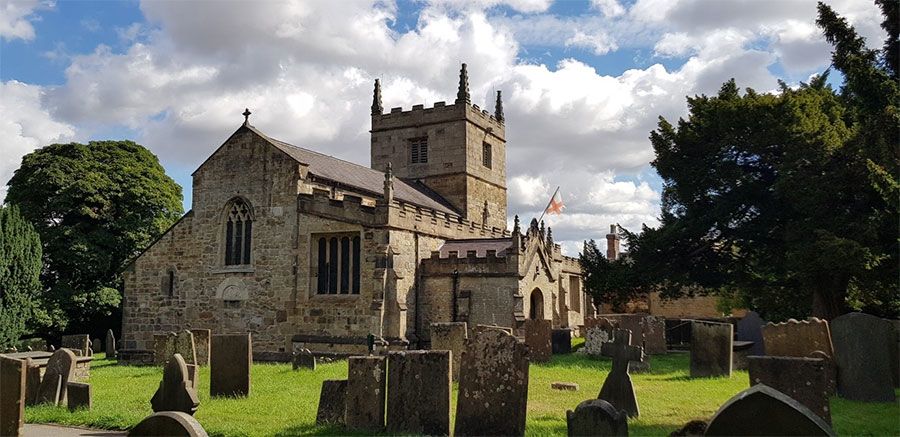
St. John the Baptist’s Church, Ault Hucknall
HOBBES' GRAVESTONE
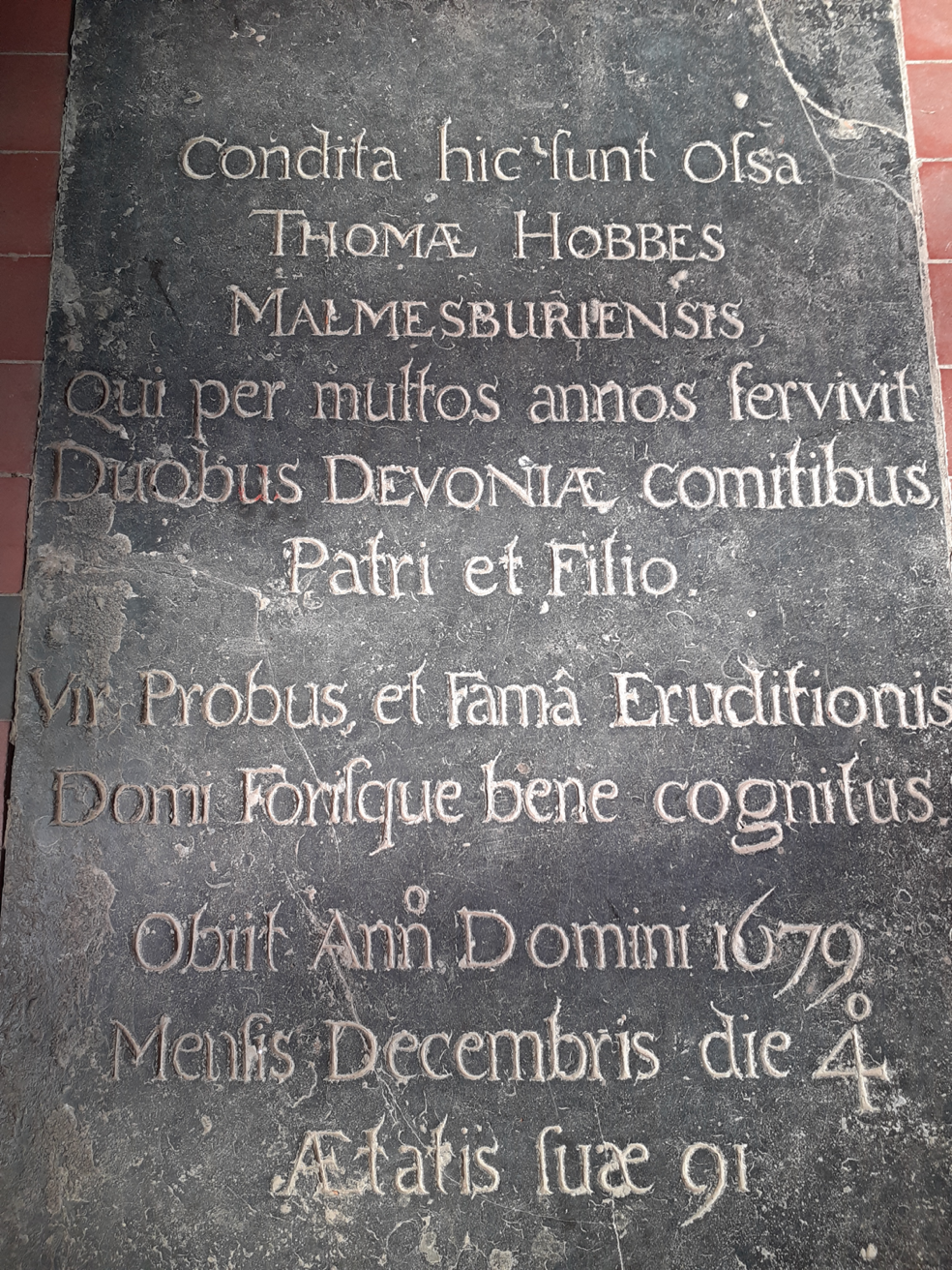
The gravestone of Thomas Hobbes with a Latin inscription. Credit: Reverend Judy Henderson Smith
Hobbes is believed to have written the inscription on his gravestone himself.
The inscription on the stone reads:
Hidden here are the bones of
Thomas Hobbes
Of Malmesbury
Who for many years served
Two Devonshires, companion to
Father and Son.
His honourable conduct and reputation for erudition
Were well-known at home and abroad.
He died in the year of our Lord 1679
Month of December the 4th day
His age 91.
The first line – “Condita hic sunt ossa” – may be a play on words. While the Latin word ‘condita’ can be translated ‘hidden’ or ‘concealed’, it can also mean ‘pickled’.
There is a rumour that he had thought about including a different joke: “This is the true philosopher’s stone.”
THE MONSTER OF MALMESBURY
Hobbes was born 1588 in Malmesbury, Wiltshire. His birth was premature, something Hobbes attributed to his mother’s fear of invasion by the Spanish Armada. Hobbes later said his mother gave birth to twins: "Me, and Fear".
Hobbes published his works as ‘Thomas Hobbes of Malmesbury’ but this was not an official title. He spent only a relatively small part of his life there, leaving when he was around 14 years old to go to university at Oxford.
His pen name gave rise to his nickname ‘the Monster of Malmesbury’. It was given partly because he was widely believed at the time to be an atheist.
These rumours of atheism stemmed from Hobbes' materialist ideas. He thought that everything which exists is made of matter, and denied the existence of immaterial souls. Many assumed this meant he also denied the existence of God.
Hobbes believed that like everything else that exists, God was material. These were deeply unorthodox religious views at the time.
Shortly after his death in 1679, an anonymous pamphlet suggested an alternative epitaph which included the lines:
Most think old Tom, with a Recanting Verse,
Must his odde Notions dolefully rehearse
To new Disciples in the Devils-Ar—
In fine, after a thousand Shams and Fobbs,
Ninety years Eating, and immortal Jobbs,
Here MATTER lies,—and there's an End of Hobbes.
Here lies Tom Hobbes, the Bug-bear of the Nation.
Whose Death hath frighted Atheism out of Fashion.
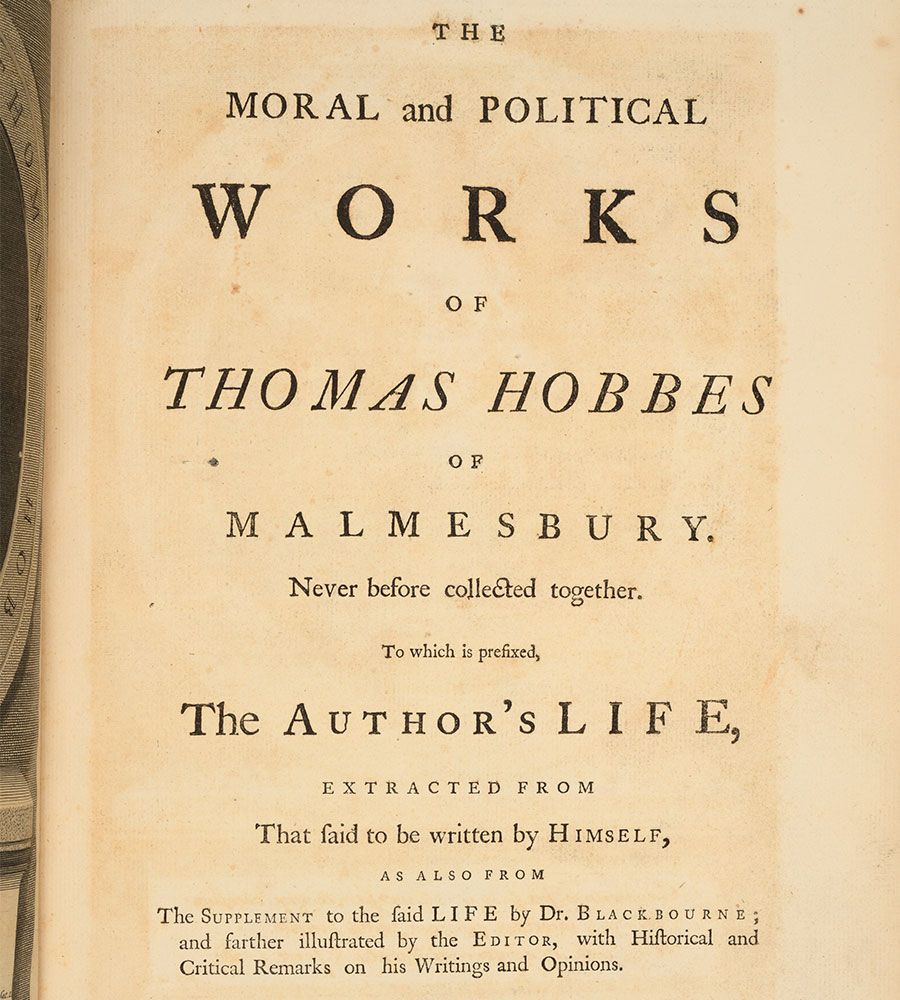
The Moral and Political Works of Thomas Hobbes of Malmesbury, 1750
Credit: University of York Rare Books, Mirfield Collection
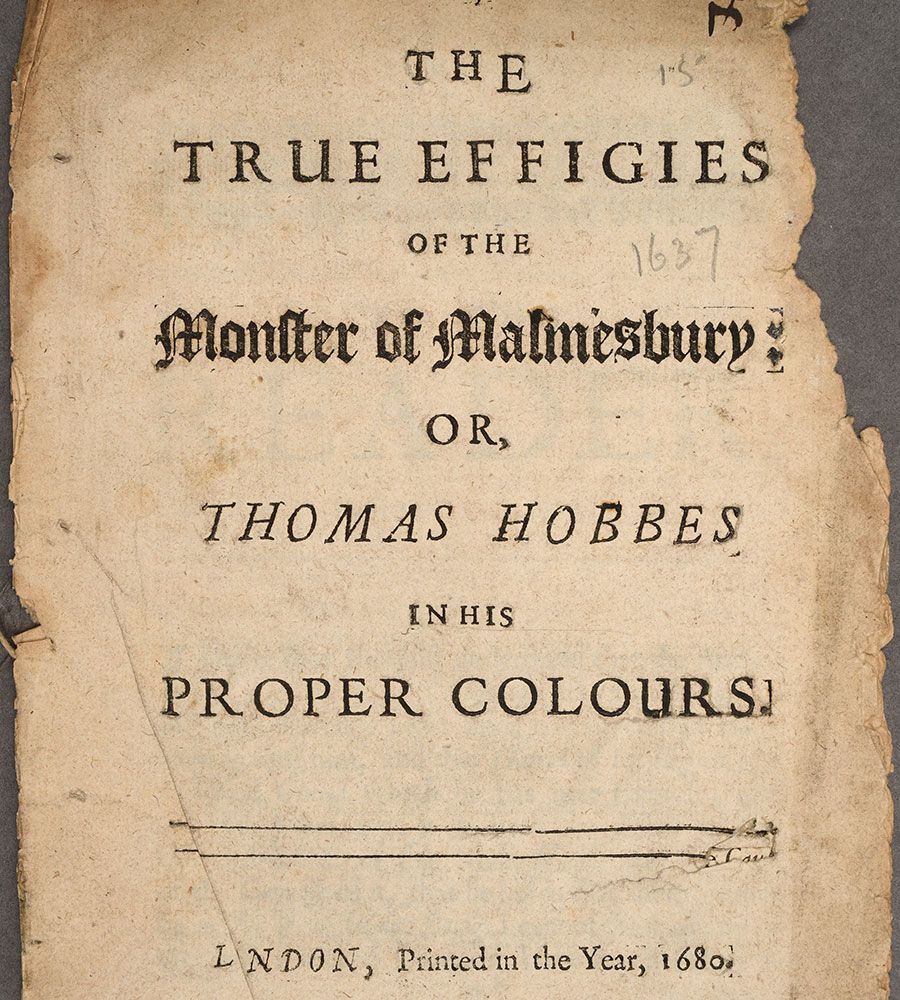
The Monster of Malmesbury; or, Thomas Hobbes in his Proper Colours, 1680
Anonymous author
Credit: University of York Rare Books, Petyt Collection
LEVIATHAN
Hobbes published a large number of works on a range of subjects, including philosophy, politics, law, history, natural science, mathematics, and geometry. He also translated a number of Greek texts, including Homer’s The Illiad and The Odessey.
His most famous work is Leviathan (1651). In it, Hobbes argues that a safe and stable society can only be created by citizens freely submitting some of their rights to a sovereign with absolute power. This idea is beautifully represented in the image on frontspiece of the book (see below), depicting a sovereign composed of the people making up the society he rules.
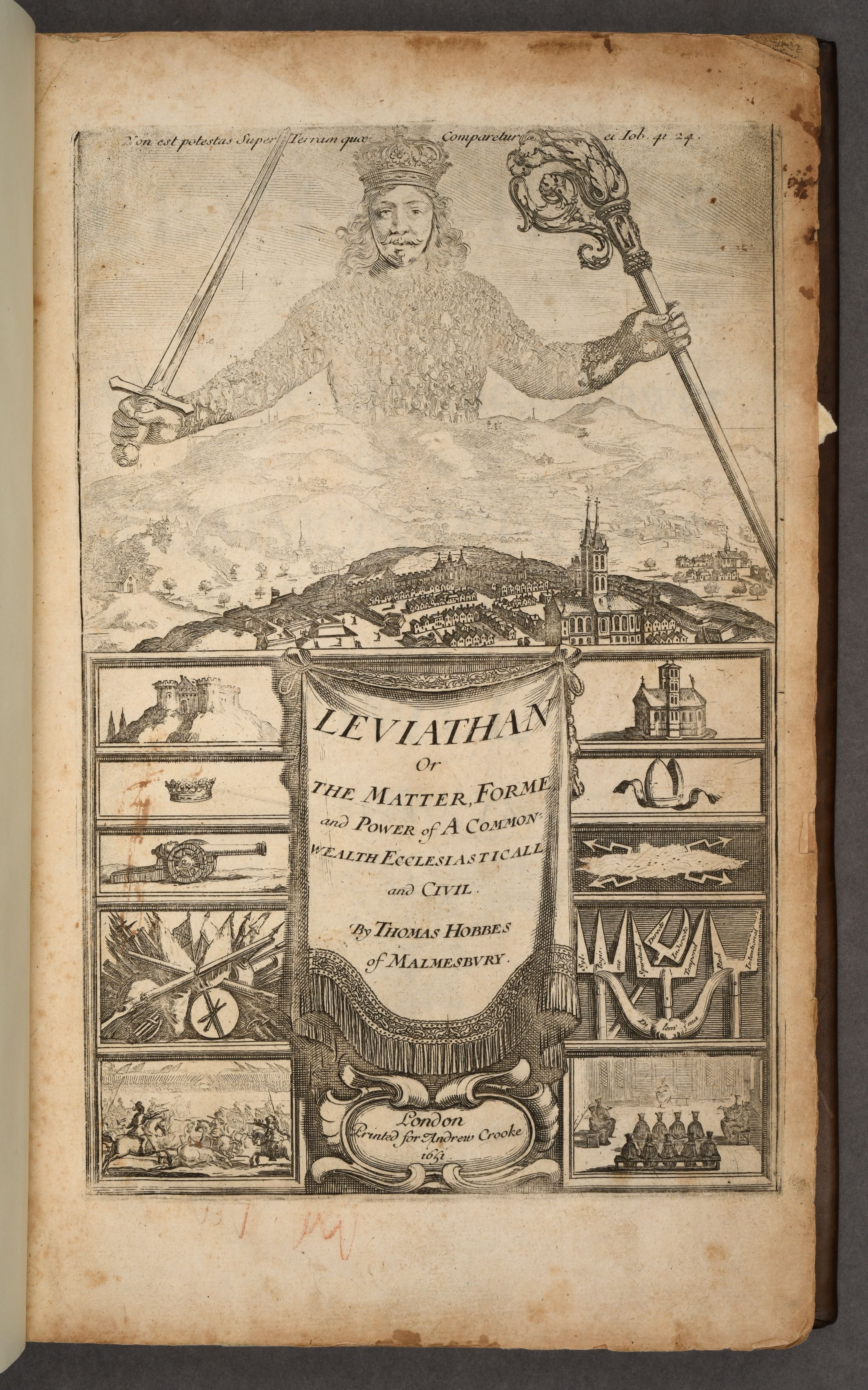

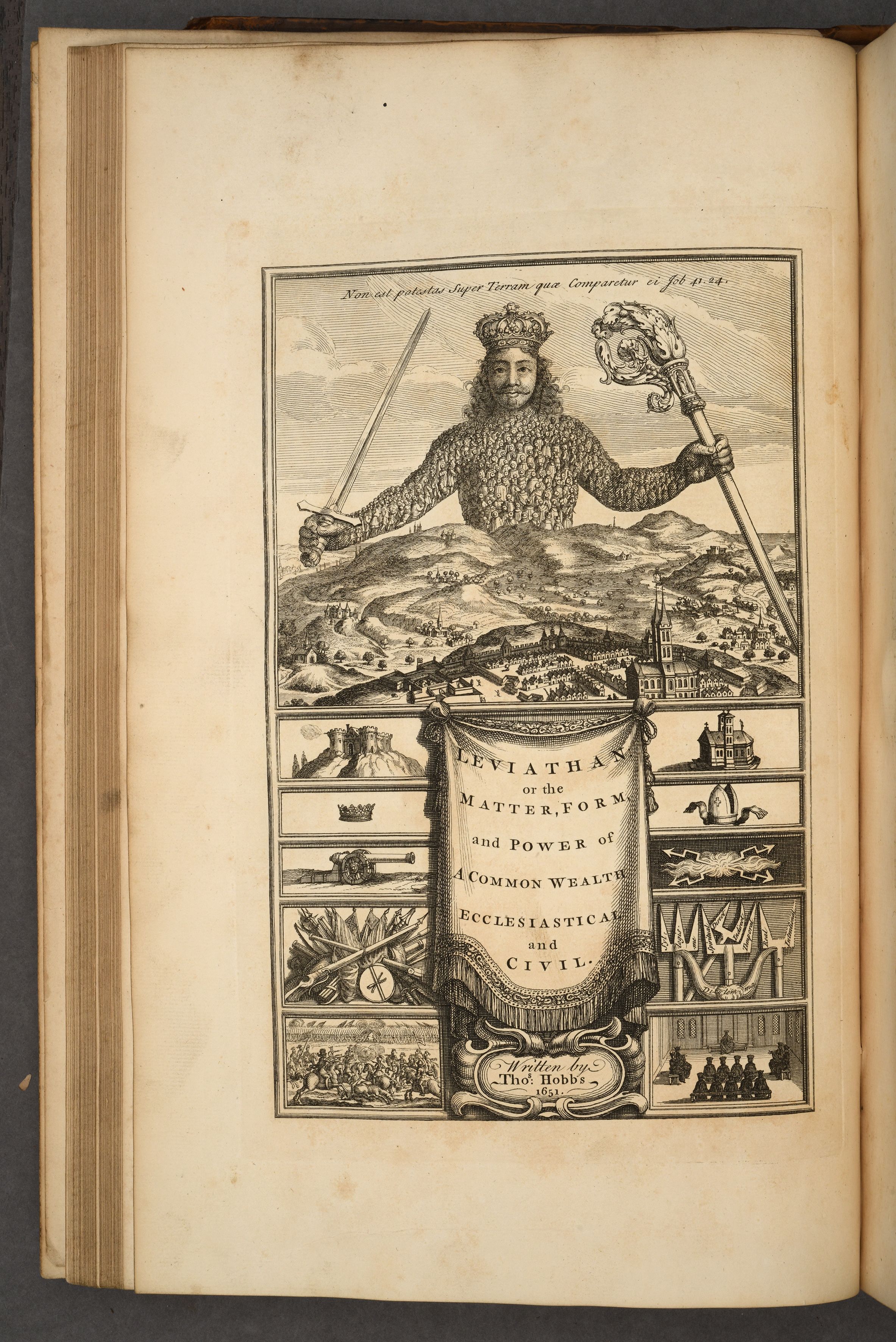

Illustration of a king with his subjects as his body, by Abraham Bosse. From Leviathan: Or, the Matter, Form and Power of a Commonwealth, Ecclesiastical and Civil (1651). Credit: University of York Rare Books, Mirfield Collection
Illustration of a king with his subjects as his body by Abraham Bosse. From Leviathan: Or, the Matter, Form and Power of a Commonwealth, Ecclesiastical and Civil (1651). Credit: University of York Rare Books, Mirfield Collection

Frontispiece page from Leviathan as printed in The Moral and Political Works of Thomas Hobbes of Malmesbury, 1750. Credit: University of York Rare Books, Mirfield Collection
Frontispiece page from Leviathan as printed in The Moral and Political Works of Thomas Hobbes of Malmesbury, 1750. Credit: University of York Rare Books, Mirfield Collection

The king's body made of his subjects, illustration after Abraham Bosse's image. From Leviathan as printed in The Moral and Political Works of Thomas Hobbes of Malmesbury, 1750. Credit: University of York Rare Books, Mirfield Collection.
The king's body made of his subjects, illustration after Abraham Bosse's image. From Leviathan as printed in The Moral and Political Works of Thomas Hobbes of Malmesbury, 1750. Credit: University of York Rare Books, Mirfield Collection.
Hobbes’s ‘social contract theory’ offered a new justification of the power of the monarchy, and a new account of the relationship between the monarchy, the Church and the people. Before Leviathan, the role of the monarchy had been justified by the ‘divine right of Kings’.
Leviathan provided a secular defence of absolute sovereignty. It allowed Protestant English monarchs to claim absolute power over the state and the Church. This is represented by the King holding both a sword (symbolising military power) and a crozier (symbolising religious power).
Leviathan caused offence across the political and religious spectrum. Some royalists were unhappy because the absolute sovereign did not need to be royal: citizens could submit to anyone able to sustain a stable society.
While some accused Hobbes of attempting to win favour with Cromwell, the royalist tone of Leviathan was uncomfortable for Parliamentarians. Catholics were offended by his attacks on Rome and the Pope, and Anglicans were offended by his unorthodox religious views.
FAME AND NOTORIETY
Hobbes is one of the subjects of John Aubrey’s Brief Lives, a collection of biographies of famous figures from the sixteenth and seventeenth centuries. Other notable figures include the playwrights William Shakespeare and Ben Johnston, the scientists Francis Bacon and Robert Boyle, and Elizabeth I’s magician John Dee.
Hobbes spent a large part of his life in Europe, where he was well-known and well-respected in intellectual circles. He lived in exile in France between 1640-51, leaving England after the establishment of the ‘Long Parliament’.
He met and interacted with many of the most important philosophers, scientists and mathematicians of the day. These included Galileo Galilei who was placed under house arrest by the Vatican for arguing that the Earth goes round the sun, and René Descartes famous for asserting ‘I think, therefore I am’.
In England, Hobbes was equal parts famous and infamous. Amongst men of religion, ‘Hobbist’ became a term of abuse, synonymous with atheism and scepticism. Aubrey recounts a report (which he describes as ‘surely true’) that some of the bishops in parliament put forward a motion to have Hobbes burned as a heretic.
This probably refers to the appointment of a House of Commons committee in October 1666 to review the laws on Atheism, Profaneness, Debauchery, and Swearing, and which was tasked with investigating Hobbes’s Leviathan in particular. This prompted Hobbes to burn some of his potentially more sensitive papers.
“ORDERED, That the Committee to which the Bill against Atheism and Profaneness is committed, be impowered to receive Information touching such Books as tend to Atheism, Blasphemy, or Profaneness, or against the Essence or Attributes of God; and, in particular, the Book published in the Name of one White; and the Book of Mr. Hobbs, called The Leviathan; and to report the Matter, with their Opinions, to the House.”
However, Hobbes also had friends in high places. As well his long and deep association with the rich and powerful Cavendish family, Hobbes tutored the future King Charles II while he was in exile. He was welcomed into the King’s court after the restoration of the monarchy in 1660. According to Aubrey, Charles ‘much delighted in his wit and smart repartees’. He nicknamed him ‘the Bear’ because of the tendency of other court members to bait him – a challenge to which Hobbes always rose.
Hobbes’s notoriety did nothing to quell the interest in his work. In 1668, the diarist Samuel Pepys paid 24 shillings for a second-hand copy of Leviathan, which had previously been on sale for just 8 shillings. The steep rise in price was due to the fact that it was ‘a book the Bishops will not let be printed again’. 24 shillings would be around £140 in today’s money and represented around 17 days’ wages for a skilled tradesman.
During the 1650’s, Hobbes became engaged in a long-running dispute with the mathematician and Presbyterian minister, John Wallis. Wallis was the Savilian Professor of Geometry at the University of Oxford. Amongst his achievements, he is credited with the introduction of the symbol ∞ to represent infinity.
In 1655, Hobbes claimed to have ‘squared the cirle’, publishing a proof that he was able to construct a square with the same area as a circle using only a compass and a straightedge. The challenge of squaring the circle derived from Greek mathematics, and was finally proved to be impossible in the late 19th century. Wallis criticised Hobbes’s attempted proof, along with other aspects of his theory of mathematics. Hobbes subsequently attempted a number of further unsuccessful proofs.
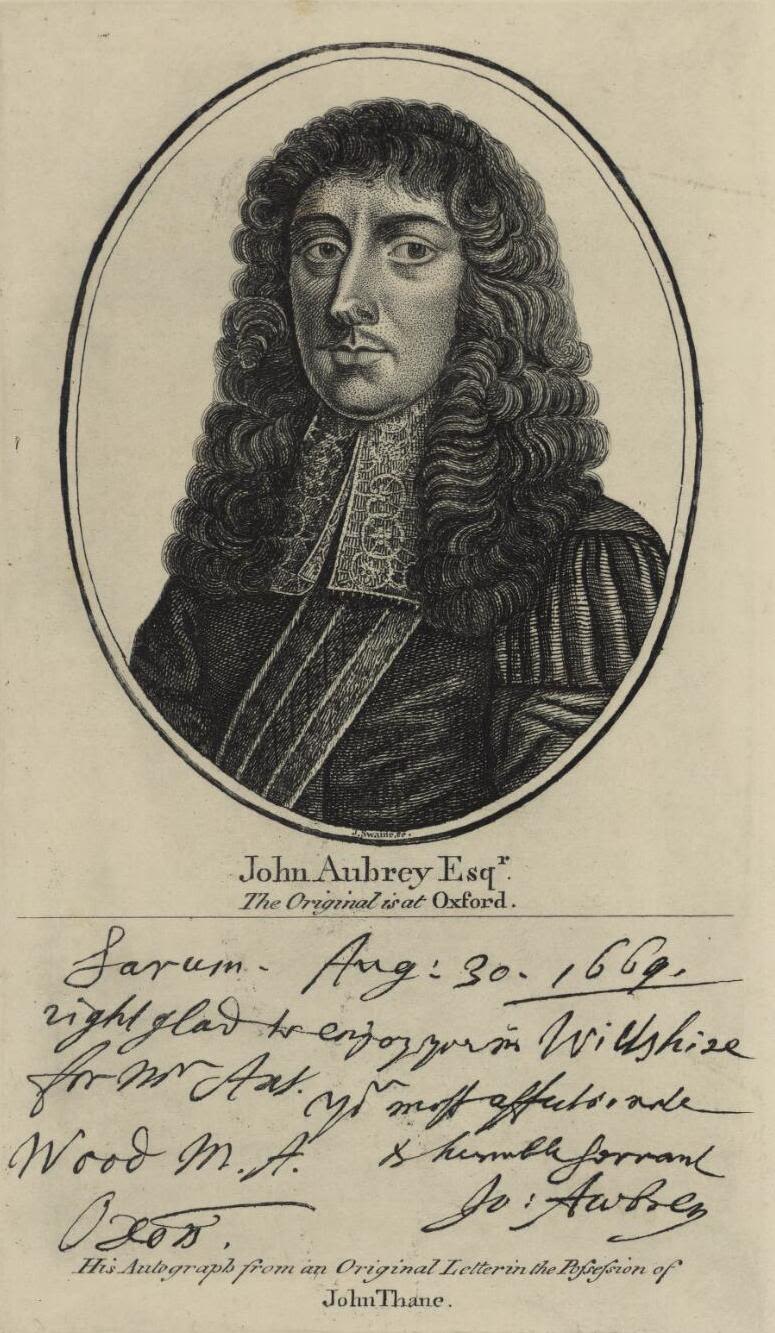
John Aubrey Esqr.
18th century engraving, artist unknown
Credit: Llyfrgell Genedlaethol Cymru – The National Library of Wales
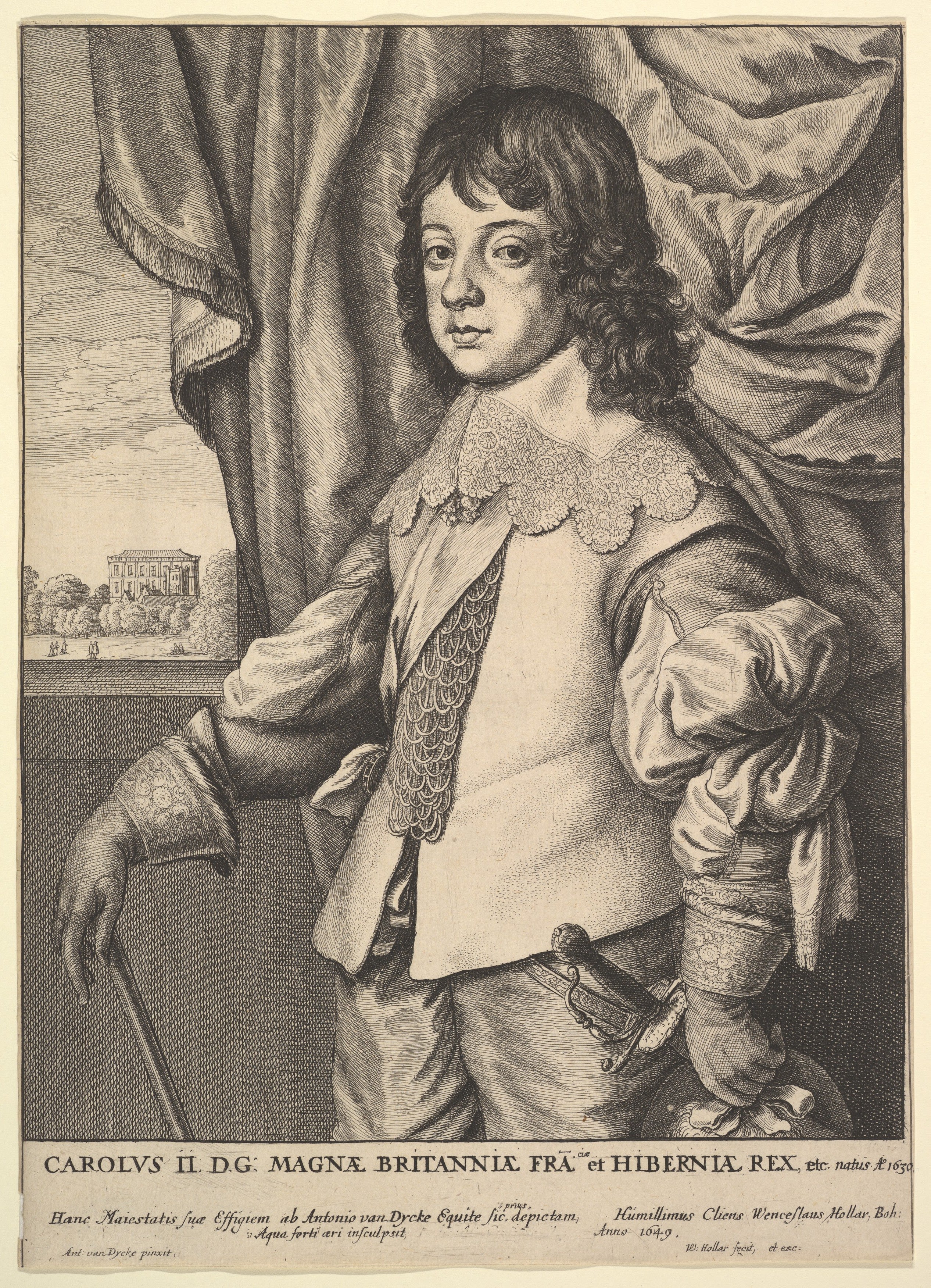
Charles II, 1649
Etching by Wenceslaus Hollar after Anthony van Dyck
Credit: Harris Brisbane Dick Fund, 1917, The Metropolitan Museum of Art
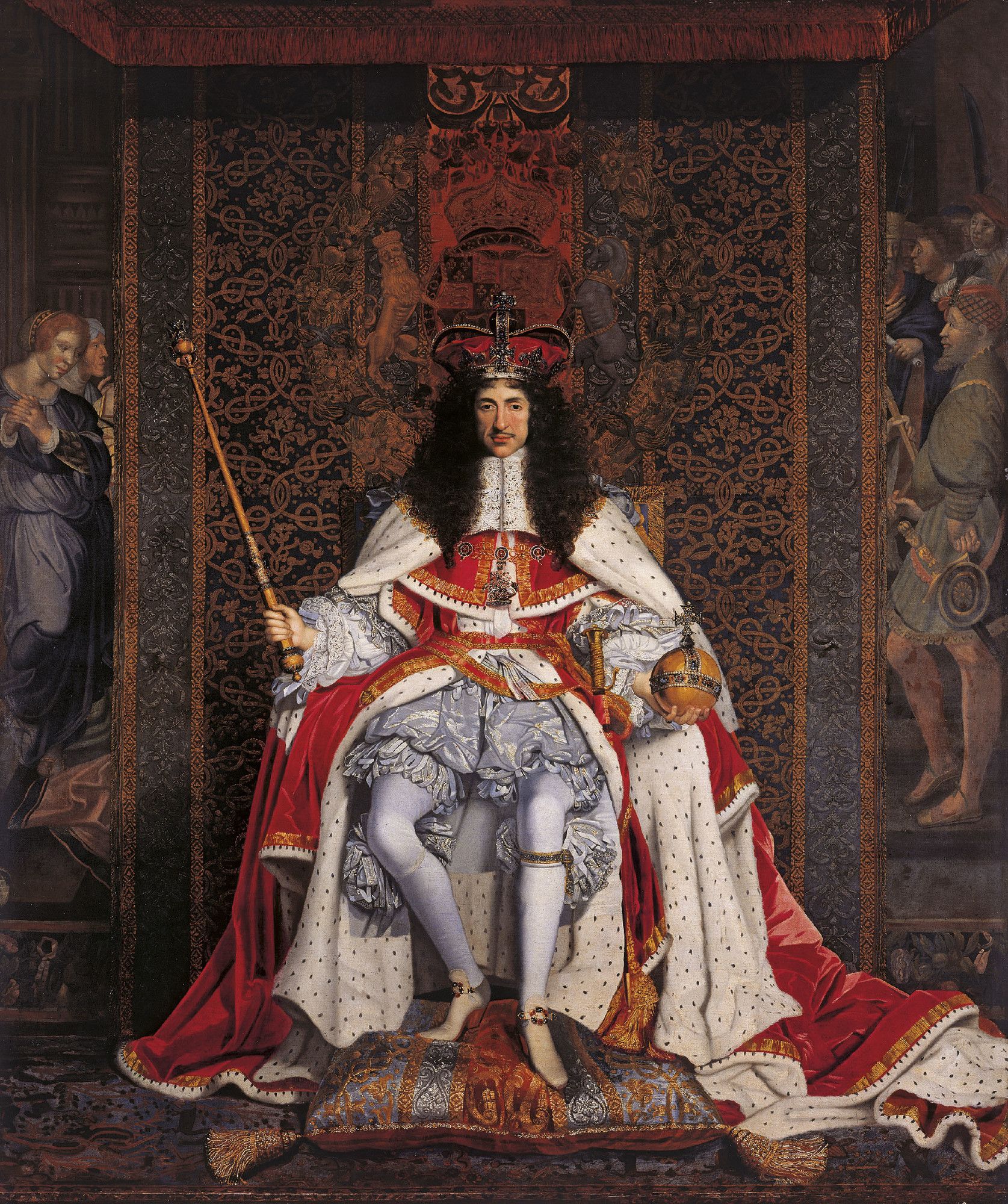
Charles II, 1661
By John Michael Wright
Credit: Royal Collection Trust
A DEVONSHIRE CONNECTION
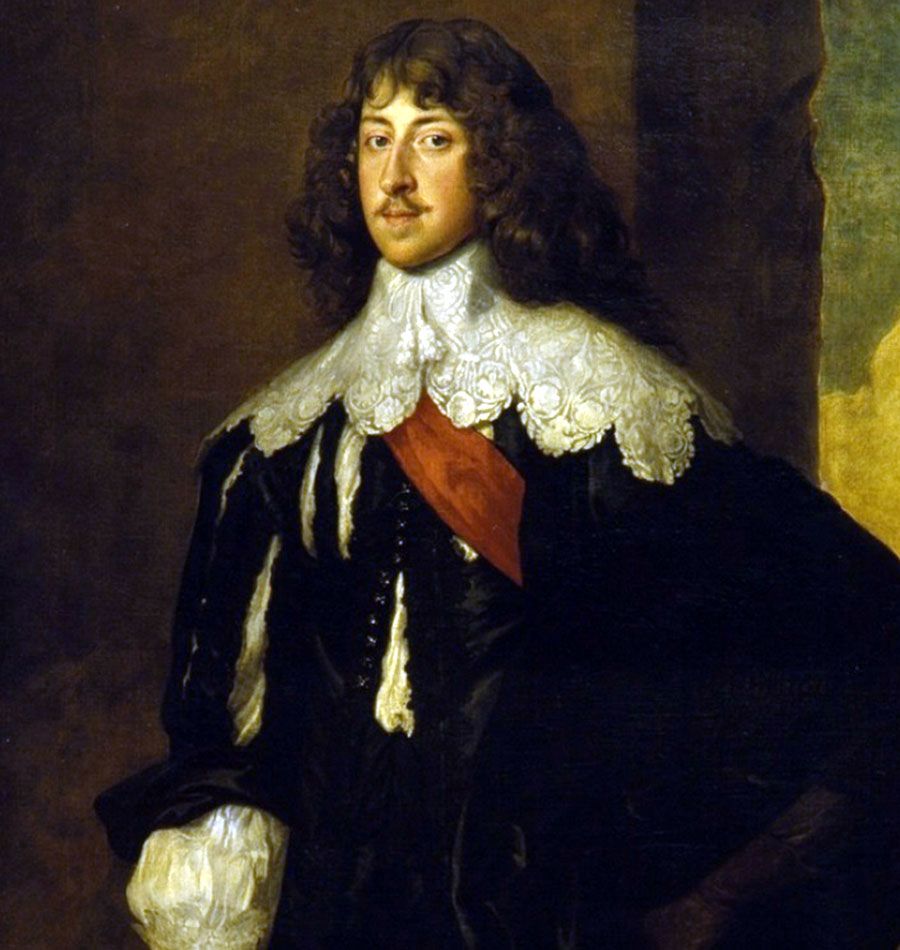
William Cavendish, Third Earl of Devonshire
by Anthony van Dyck
Credit: Wikimedia Commons
Hobbes was tutor and companion to William Cavendish, Second Earl of Devonshire (1590-1628) and his son William Cavendish, Third Earl of Devonshire (1617-1684).
He remained a close friend of the Cavendish family. Two further William Cavendishes were patrons of his: the First Duke of Newcastle (1593-1676), cousin of the Second Earl who owned nearby Bolsover Castle, and the first Duke of Devonshire (1640-1707), son of the Third Earl and with whom Hobbes spent the final years of his life.
When he joined the Cavendish family, Hobbes was a similar age to the first William he served. Hobbes was his tutor, page, secretary but also his companion, accompanying him riding, hunting and on a Grand Tour, during which they travelled to France and Italy.
HIS FINAL YEARS
Hobbes famously described life outside of civilised society as ‘solitary, poor, nasty, bruitish and short’. Thanks in part to his connections with the English aristocracy, Hobbes lived to the very old age of 91. Hobbes himself attributed his longevity to a moderate lifestyle, regular exercise, and singing out loud when no-one was listening: according to Aubrey, ‘not that he had a very good voice…[but] he did believe it did his Lunges good’.
Hobbes developed a ‘shaking palsy’ in 1650 which worsened progressively throughout his life; by the end of his life he was unable to write his own name. It is likely that he had Parkinson’s disease.
Hobbes spent the final years of his life with the Cavendish family in their homes in nearby Chatsworth and Hardwick Hall. He died at Hardwick Hall after suffering a stroke.
From there, he was taken on the short journey to St John the Baptist’s Church in Ault Hucknell. According to Aubrey the "family and neighbours that came to his Funerall, and attend him to his grave, were very handsomely entertained with Wine, burned and raw, cake, biscuit, etc.", a testament to how well respected he was by the Cavendish family.

Thomas Hobbes, aged 89
manner of John Michael Wright (bap. London 1617 - London 1694)
Credit: Hardwick Hall, The Devonshire Collection (National Trust)
©National Trust Images/John Hammond
FIND OUT MORE
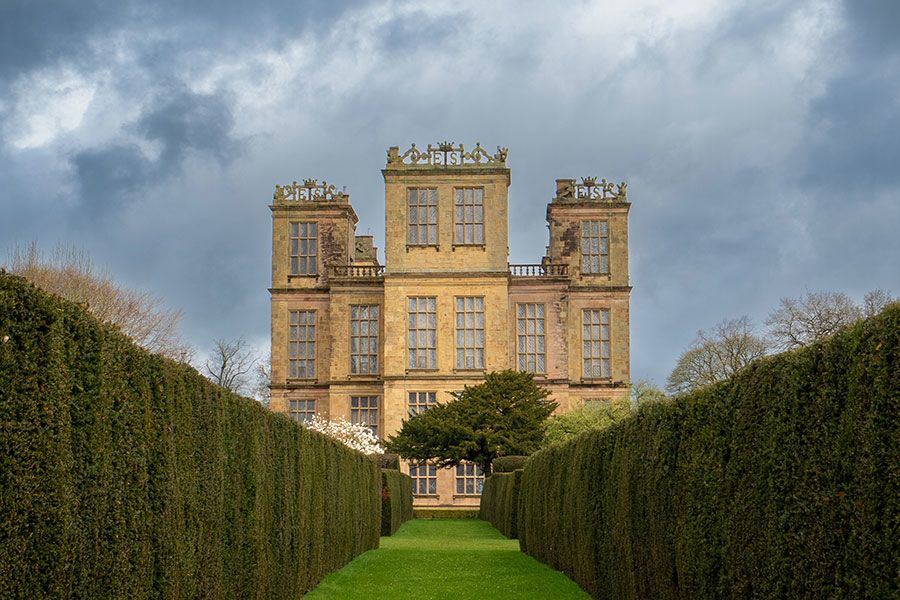
Visit the area
Find information on visiting:
- Hardwick Hall (National Trust),
- Hardwick Old Hall (English Heritage)
- St John the Baptist's Church, Ault Hucknall.
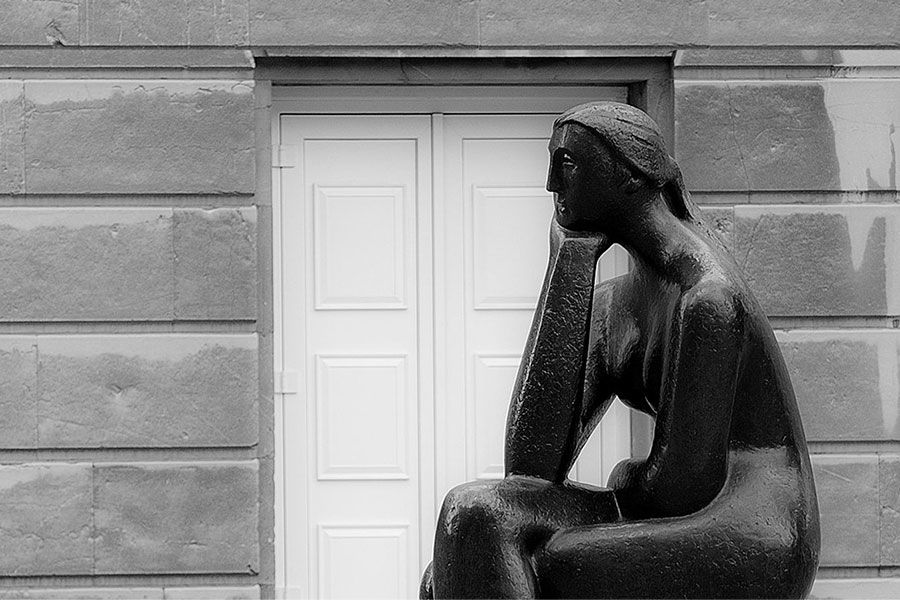
Philosophy research

Cavendish connections
Margaret Cavendish was a celebrity aristocrat, poet, novelist, dramatist, philosopher and scientist.
Read more about Margaret Cavendish's writing and philosophy.
